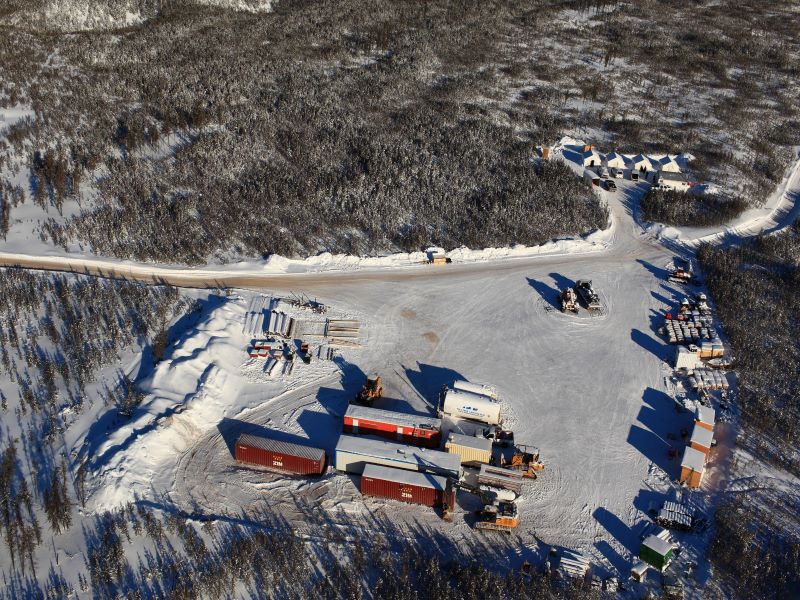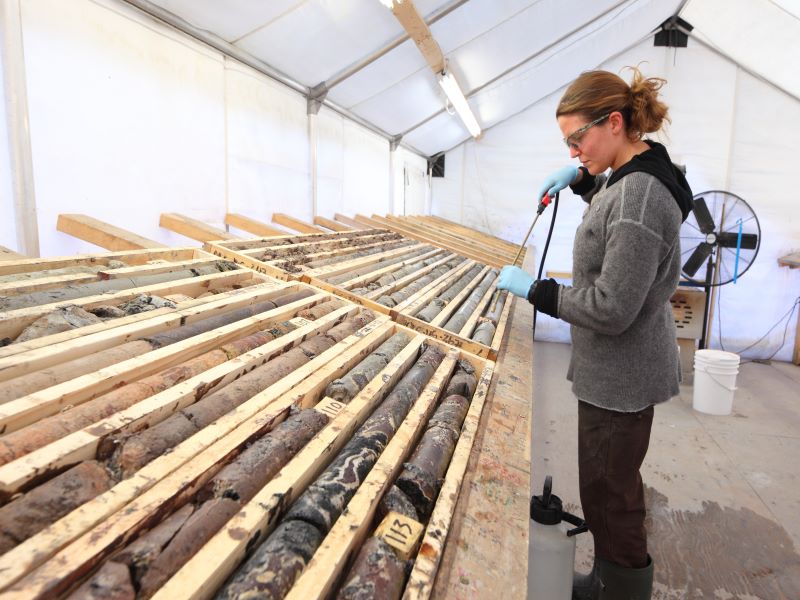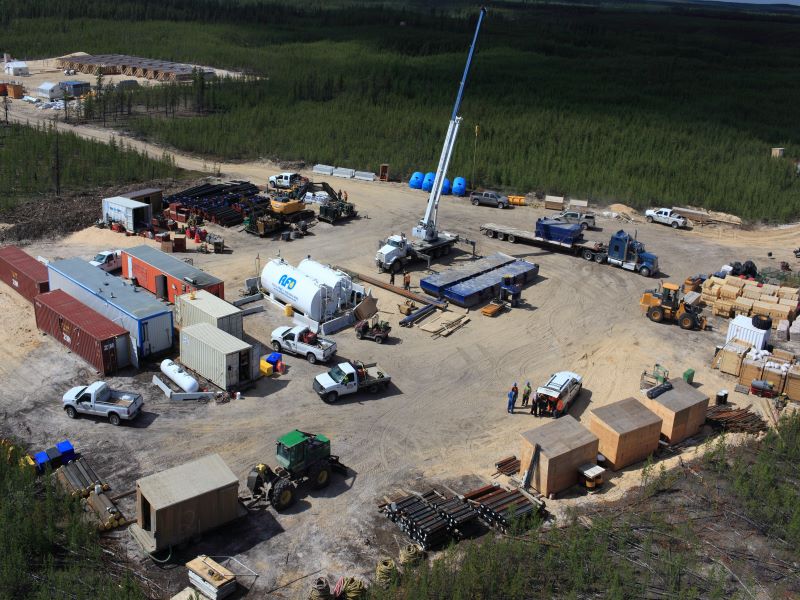The Patterson Lake South (PLS) uranium project is a proposed underground mine in Saskatchewan, Canada, by Fission Uranium.
A pre-feasibility study (PFS) for the PLS property was completed in September 2019 while the feasibility study, which commenced in June 2021, was completed in January 2023.
Highlights of the feasibility study include an initial capital expenditure of C$1.15bn ($858.8m), a mine life of ten years, and production of 90.9Mlb (41,231t) of uranium oxide (U₃O₈) over the life of mine (LOM).
The project will focus on the extraction of resources from a high-grade deposit, called Triple R, located within the property. Construction of the project is expected to commence in 2026 and last for three years, with production expected to start in 2029.
PLS Project location and geology
The PLS project is located approximately 550km north-northwest of Prince Albert in northern Saskatchewan. The PLS property encompasses 17 contiguous mineral claims spread across 31,039ha. The Triple R deposit is located on claim S-111376.
The property is situated within the north-eastern bounds of the Cretaceous Mannville Group, near the south-western edge of the Athabasca Basin. The project area is underlain by basement rocks of the Clearwater and Taltson domains.
Mineralisation and reserves of the uranium project
Uranium mineralisation at the Triple R deposit is found within the Patterson Lake Conductive Corridor along the strike in the western and eastern directions. Mineralisation occurs within mafic volcanic intrusive rocks with metasomatic mineral assemblages, silicification, and hydrothermal graphite.
The probable mineral reserves at the PLS uranium project were estimated at approximately three million tonnes (Mt), with 93.7Mlb (42,501t) of U₃O₈ of contained metal, grading 1.41%, as of January 2023.
Mining methods of the PLS uranium project
The PLS uranium project will be operated as an underground mine using longhole stoping method in a longitudinal retreat orientation. The completed stopes will be backfilled with cemented rock fill.
A surface decline will be developed near the processing plant and waste stockpile to provide access to the deposit. Excavation works for the decline will be conducted using a tunnel shield method with a hydrostatic segmental concrete liner for ground support. Two vertical shafts will also be added to act as a dedicated ventilation system for air intake shaft and exhaust air, respectively.
The artificial ground freezing method will be employed to partially recover mineralised material between the overburden and the bedrock. This will be accomplished by freezing the ground by drilling holes into the overburden and shallow bedrock.
A chilled brine solution from a refrigeration plant will be pumped through the holes to create a frozen cap. The drift and fill mining method will be used to extract the mineralised material with cemented hydraulic fill as backfill. The use of explosives in the crown pillar areas will be avoided, thanks to the use of roadheader tunnelling equipment.
Processing of the PLS uranium project
The processing facility will include a conventional grinding and leaching circuit. The processing plant is expected to have a nominal processing throughput of 1,000 tonnes per day (tpd) with an estimated U₃O₈ recovery rate of 97%.
The run-of-mine (ROM) ore will be ground in a single-stage semi-autogenous grinding (SAG) circuit to achieve a preferred size of 150µm. The ground ore will be introduced into a leaching circuit with sulphuric acid and hydrogen peroxide at 50°C.
The leached slurry product from the circuit will be processed using counter-current decantation and clarification to produce the pregnant leach solution. The uranium content of the PLS will be purified and concentrated via a solvent extraction (SX) circuit and precipitated to form yellowcake. Calcination of the yellowcake precipitate will be done at 450°C and the resultant product will be packaged in drums.
The process tailings will be neutralised prior to being deposited in the tailings management facility (TMF).
Infrastructure details of the PLS project
The PLS property can be accessed by road via Highway 955, which runs north to the former Cluff Lake mine.
The peak power requirement for the site is estimated to be between 8.7MW and 16.1MW, which is proposed to be met using liquefied natural gas (LNG)-powered generators.
The raw water supply required for operations will be pumped from Patterson Lake to a storage tank in the effluent treatment plant while potable water will be trucked to the site.
Contractors involved
The feasibility study for the project was prepared by Tetra Tech Canada, a subsidiary of global consulting and engineering firm Tetra Tech. The company provided designs for the process plant and related infrastructure facilities, as well as other aspects such as capital cost and operating cost summary, in addition to financial analysis.
Environmental and advisory solutions provider SLR Consulting (Canada) was appointed to provide the resource estimation for the feasibility study.
Mining Plus Canada Consulting was responsible for mine design, mineral reserve estimation, mining infrastructure, and capital and operating cost estimates related to mining.
Canadian engineering and environmental consultancy Clifton Engineering Group was engaged for aspects such as permitting, environment, socioeconomics, and tailings management.
The geotechnical and hydrogeological studies for the feasibility study were completed by BGC Engineering.
Roscoe Postle Associates (RPA), Wood Canada, Melis Engineering, Clifton Associates, Artisan Consulting Services, Thyssen Mining Construction of Canada, BGC Engineering, and Newmans Geotechnique prepared the PFS for the PLS uranium project in 2019.






